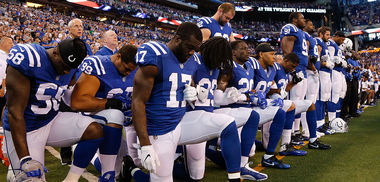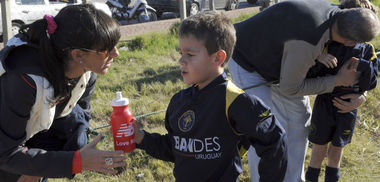

The Anatomy of Constructive Conflict
Warm Up
In any team culture, conflict is inevitable. But when handled the right way, a skillful leader can turn a seemingly negative situation toward a positive outcome. Skilled leaders are able to use the passion and energy that fuels most conflicts and turn it into a win for their teams.
Effective leaders learn how to manage challenging situations so that conflict becomes constructive rather than destructive. Here are a few ways you can train yourself to become a effective conflict facilitator.
Workout
Address the Tension
When teams start playing “politics” with one another, a false sense of harmony settles in which actually creates a dangerous tension. According to one author, "Politics is when people choose their words and actions based on how they want others to react rather than based on what they really think.”
Think of this tension like your overstocked refrigerator at home. You know that feeling when you open your fridge and are greeted by a mess of leftovers, expired food, and families of condiment bottles? It’s not a great feeling, so you delay your cleaning responsibilities—meanwhile your refrigerator gets dirtier and more cluttered by the day.
In the same way, the longer you let unhealthy conflict fester within your team, the more rancid and poisonous the mess will be when you finally get around to cleaning it out. Don’t let tension go unaddressed for very long! When leaders can effectively address conflict head-on and facilitate a positive outcome, the tension will disappear and everyone can refocus their energy on helping the team succeed.
Argue About Ideas
Conflict becomes destructive when disagreements leave the realm of the abstract and venture into the messy world of personal insults. If you find yourself in the middle of a conflict do your best to keep the conversation centered around disagreement over an idea, not an attack on the person. Influence the dialogue towards a discussion over the validity of how a particular idea could help/hurt the team, not towards who is to blame and why.
If the conversation starts to veer towards malicious personal attacks, get your teammates back on track by reminding them that “you’re all on the same team” and each of you wants what’s best for the team in the long-run.
Avoid Public Embarrassment
If you see a teammate get frustrated during the course of a practice or game, use wise judgment on how you confront the issue in the heat of the moment. Most of the time handling conflicts publicly can turn out to be destructive rather than constructive because emotions can cloud our judgment.
Preserving a sense of unity within your team means avoiding public embarrassment at all costs. Often, addressing the issue by asking the player/players involved to meet at a later time will give everyone time to process the situation rationally.
Cooldown
“Instead, speaking the truth in love, we will grow to become in every respect the mature body of him who is the head, that is, Christ.” (Ephesians 4:15)
The apostle Paul gives us a great bottom line for how to most effectively handle conflict. He calls us to walk the narrow line of communicating the truth in love because that’s how Jesus himself communicated. If we can lovingly communicate the truth of a situation, people will get the sense that our intentions are genuine and our motives are pure.
Communicating the truth in love is a skill that requires development. When the rubber meets the road in addressing conflict, the tipping point on whether that conflict will ultimately be destructive or constructive is often determined in the first few sentences of dialogue.
A simple way to practice communicating the truth in love is to take a notepad and write down a few opening phrases that effectively strike this balance.
Truth + Love Phrases (examples)
- “I hear what you’re saying, I’m sorry that you’re feeling that way—how can I help?”
- “Man that must frustrating, I can imagine what your going through. What next steps could we take together to find a solution?”
- “I could understand how you might think that, but at the end of the day I think everyone here wants the same thing. How do you think we could come to an agreement together?”
Grab a pen and paper and make your own list now. Then when conflict arises use this language to constructively facilitate your next conflict.
Pastor and author Tim Keller summarizes our goal succinctly, saying that to be most effective in our leadership we need a healthy balance of love and truth.
“Love without truth is sentimentality; it supports and affirms us but keeps us in denial about our flaws. Truth without love is harshness; it gives us information but in such a way that we cannot really hear it.”
When we learn to communicate the truth in love we will grow to become mature leaders who love others, communicate well, and use conflict effectively.









